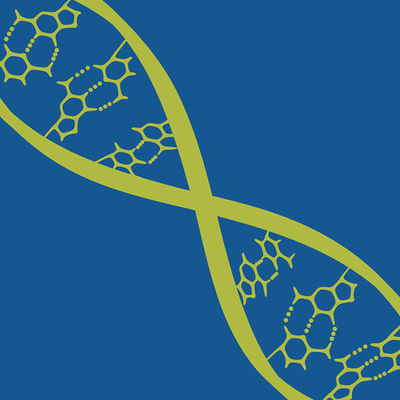预约演示
更新于:2025-05-07
HER2 x Tubulin
更新于:2025-05-07
关联
55
项与 HER2 x Tubulin 相关的药物作用机制 HER2拮抗剂 [+1] |
在研机构 |
原研机构 |
在研适应症 |
最高研发阶段批准上市 |
首次获批国家/地区 中国 |
首次获批日期2021-06-08 |
作用机制 HER2拮抗剂 [+2] |
在研适应症 |
非在研适应症- |
最高研发阶段批准上市 |
首次获批国家/地区 印度 |
首次获批日期2021-05-24 |
作用机制 HER2拮抗剂 [+2] |
原研机构 |
最高研发阶段批准上市 |
首次获批国家/地区 美国 |
首次获批日期2013-02-22 |
436
项与 HER2 x Tubulin 相关的临床试验NCT06348134
Assessing the Efficacy and Safety of Optimal Neoadjuvant to Adjuvant Anti-HER2- Based Therapy in Nigerian Women With HER2+ Breast Cancer
Doctors leading this study would like to learn about providing cancer treatment/therapies to Nigerian women with breast cancer based on their human epidermal growth factor receptor 2 (HER2) status. This study will focus on the efficacy and safety of anti-HER2 cancer treatment before and after surgery.
开始日期2026-01-01 |
申办/合作机构 |
100 项与 HER2 x Tubulin 相关的临床结果
登录后查看更多信息
100 项与 HER2 x Tubulin 相关的转化医学
登录后查看更多信息
0 项与 HER2 x Tubulin 相关的专利(医药)
登录后查看更多信息
107
项与 HER2 x Tubulin 相关的文献(医药)2025-05-01·Pathology - Research and Practice
Proteomic insights into lymph node metastasis in breast cancer subtypes: Key biomarkers and pathways
Article
作者: Canturk, Nuh Zafer ; Simsek, Turgay ; Bal Albayrak, Merve Gulsen ; Kasap, Murat ; Akpinar, Gurler
2024-12-01·Materials Today Bio
Research progress of paclitaxel nanodrug delivery system in the treatment of triple-negative breast cancer
Review
作者: Zou, Jun-Bo ; Zhang, Xiao-Fei ; Guo, Dong-Yan ; Tian, Yuan ; Cheng, Jiang-Xue ; Sun, Jing ; Qiao, Jia-Xin ; Zhai, Bing-Tao ; Wang, Zhan-Peng ; Tian, Huan ; Luan, Fei ; Fan, Qiang-Qiang
2024-12-01·Pharmacological Research
Targeted and cytotoxic inhibitors used in the treatment of breast cancer
Review
作者: Roskoski, Robert
225
项与 HER2 x Tubulin 相关的新闻(医药)2025-05-04
·医药速览
随着抗体药物偶联物(ADCs)的迅速发展,目前已有12种ADC获得FDA批准,另有超过280种不同的ADC处于临床开发阶段。尽管在ADC药物的研发上取得了一定的成功,但仍然存在重大挑战。特别是,将临床前研究结果转化为临床应用仍然十分困难。这是因为许多ADC常与血液学毒性相关,这种毒性可能是由于ADC直接杀伤造血细胞,或由在身体其他部位释放的载荷间接引起的。因此,开发能够预测临床结果的体外检测方法成为ADC药物向临床转化的不可或缺的条件。近日的AACR大会上,Zymeworks公布开发了一种可能会改善ADC的开发,并指导选择最优的连接子和载荷的体外预测血液学毒性的方法。图1. 骨髓来源的造血干细胞/祖细胞在正常分化为谱系特异性细胞及其相关血液学毒性过程中的细胞层级结构示意图。研究方法Zymeworks测试了不同的抗体药物偶联物(ADC)载荷(exatecan、DXd、SN-38、ZD06519、DM1、DM4、MMAE、MMAF),以了解游离载荷本身对非靶向毒性的影响。通过将靶向抗体和非靶向抗体与一种共同的hemiasterlin微管抑制剂偶联,同时改变可被蛋白酶切割的连接子,生成了不同的ADC,以评估连接子对靶向和非靶向细胞毒性在体外的影响。并且在最后,Zymeworks测试了两种具有相同药物-连接子的临床验证的ADC,以评估抗体在ADC非靶向毒性中的影响。图2. 抗体药物偶联物(ADC)的示意图,使用这些ADC进行了克隆形成、可切割性、细胞毒性以及/或体外稳定性检测。Telisotuzumab和Palivizumab ADC的药物抗体比(DAR)为4(±0.2),而Trastuzumab和Patritumab ADC的DAR分别为7.8和7.7。人源克隆形成细胞(CFC)检测能够预测某些与抗体药物偶联物(ADCs)相关的临床毒性。Zymeworks从骨髓中分离出健康的CD34⁺造血干细胞,并与多种细胞因子共同培养,以诱导其分化为红系(BFU-E)、髓系(CFUGM)或巨核系(CFU-Mk)祖细胞,随后用不同浓度的抗体药物偶联物(ADC)、载荷或仅用制剂缓冲液(溶剂对照)进行处理。孵育后,计数克隆数量,并通过比较处理组与溶剂对照组的克隆数量,确定克隆抑制百分比。图3. 克隆形成细胞(CFC)检测流程的示意图。载荷——ADC载荷对人类红系、髓系和巨核系祖细胞具有不同的固有细胞毒性。图4. 在克隆形成细胞(CFC)检测中(如图3所示),游离拓扑异构酶1抑制剂(TOPO1i)和微管抑制剂(MTI)载荷的体外细胞毒性。上图的结果显示,Exatecan在CFC检测中表现出比其他TOPO1i载荷更高的细胞毒性。类似地,对于MTI载荷,DM4和MMAE显示出最高的细胞毒性,其次是DM1和MMAF。连接子——比较具有相同抗体和载荷但不同连接子的非靶向ADC,突出了连接子对非靶向毒性的潜在影响。表1. 不同ADC在克隆形成细胞(CFC)检测中的细胞毒性(EC₅₀,单位为nM,检测方法如图3所示)。抗体——比较具有相同载荷和连接子但不同抗体的ADC,突出了抗体对非靶向毒性的潜在贡献。图5. 克隆形成细胞(CFC)检测(如图3所示)。图中显示,Patritumab deruxtecan(HER3-DXd)表现出比Trastuzumab deruxtecan(T-DXd)更高的细胞毒性,这与在临床环境中接受HER3-DXd治疗的患者相比接受T-DXd治疗的患者出现更高发生率的血液学毒性的观察结果一致(参考文献1、2)。体外连接子切割和细胞毒性检测揭示了不同的载荷释放动力学。不同的连接子在溶酶体检测中以不同的速率释放载荷,如下图所示。图6. 通过将相应的测试样品(1-3 μM)加入到人溶酶体提取液中,测量了来自抗体药物偶联物(ADCs)的释放载荷。释放的载荷通过液相色谱-质谱(LC-MS)进行测定。P.L.Salomon等人(参考文献3)也报告了在生化检测中连接子切割速率与体外细胞毒性之间存在显著的不一致性。对带有不同连接子的cMet和palivizumab的半花碱类抗体药物偶联物(ADCs)的体外评估突出了靶向依赖性细胞毒性以及某些连接子的不稳定性。表2. 靶向ADC与非靶向ADC的体外细胞毒性及培养基中稳定性比较。对于细胞毒性检测,癌细胞用测试样品的梯度稀释液处理,并在标准培养条件下孵育4天。处理后,通过ATP定量荧光试剂测定细胞活性。对于ADC在生长培养基中的稳定性检测,将EBC-1癌细胞在标准培养条件下培养4天后,收集培养基(RPMI 1640培养基,添加10%胎牛血清),随后通过离心去除细胞和杂质。ADC在生长培养基中以1.4 μM的浓度孵育4天,并通过质谱法测定载荷释放量(占理论值的百分比)。结论能够预测临床毒性特征非常重要,这一特征在很大程度上取决于载荷类别以及抗体药物偶联物(ADC)的关键属性。临床前研究结果难以有效预测ADC的临床毒性,导致ADC设计需要在患者中进行经验性测试。使用原代骨髓细胞的克隆形成细胞(CFC)检测可用于评估ADC及其载荷对血液祖细胞系的毒性。将ADC的临床毒性与体外CFC检测结果进行比较表明,CFC检测能够有效重现特定的临床观察结果,使其成为ADC筛选的有价值工具。由于ADC在人体内的复杂代谢过程,预测ADC的临床毒性特征仍然是一个复杂的挑战。简单了解--ZymeworksZymeworks是一家全球性的生物技术公司,致力于开发用于治疗难治性疾病的新型多功能治疗药物,包括癌症、炎症和自身免疫性疾病。Zymeworks正凭借其在抗体药物偶联物和多特异性抗体治疗药物领域的经验和能力,快速推进丰富的产品管线,覆盖多个具有重大未满足医疗需求的适应症中的新型靶点。除了拥有完全自主的管线外,Zymeworks还拥有Azymetric™技术平台,通过与全球生物制药公司的战略合作伙伴关系,在产品开发中得到了进一步的利用和临床验证。参考文献1. I. E. Krop et al. J. Clin. Oncol. 2023, 41, 5550-55602. S. Modi et al. N. Engl. J. Med. 2020, 382, 610-6213. P. L. Salomon et al. Pharmaceutics 2019, 16, 4817-4825基础知识点供给站:Exatecan(依喜替康):一种DNA拓扑异构酶I抑制剂(Topoisomerase I inhibitor),通过抑制拓扑异构酶I的活性,干扰癌细胞的DNA复制和修复过程,从而发挥抗癌作用。主要用于癌症治疗研究,包括结直肠癌、肺癌、乳腺癌等。它可以单独使用,也可以与其他药物(如氟尿嘧啶类药物)联合使用,能够显著延长患者的生存期,提高生活质量。DM4:一种细胞毒性美登素类药物,是美登素(maytansine)的结构类似物,含有巯基(-SH)。它通过抑制微管蛋白聚合和微管组装,增强微管的不稳定性,从而有效抑制微管动力学,导致有丝分裂阻滞和细胞凋亡。主要用于制备抗体药物偶联物(ADC),通过二硫键将美登素与抗体连接起来,用于癌症的靶向治疗。MMAE(Monomethyl auristatin E):一种合成的微管蛋白抑制剂,属于奥瑞他汀类药物。它通过与微管蛋白结合,阻止微管的聚合,从而抑制细胞的有丝分裂,导致细胞周期阻滞和细胞凋亡。广泛用于抗体药物偶联物(ADC)的开发,作为载荷部分,通过抗体将药物精准递送到癌细胞中,发挥高效的细胞毒性作用。DM1(Mertansine):一种美登素类药物,是一种强效的微管蛋白抑制剂。它通过与微管蛋白结合,抑制微管的动态性,从而阻止细胞的有丝分裂。DM1是最早用于抗体药物偶联物(ADC)的载荷之一,例如在T-DM1(Ado-trastuzumab emtansine)中,DM1通过连接子与抗体结合,用于治疗HER2阳性乳腺癌。欢迎感兴趣的朋友进群讨论,群二维码如下:推文用于传递知识,如因版权等有疑问,请于本文刊发30日内联系医药速览。原创内容未经授权,禁止转载至其他平台。有问题可发邮件至yong_wang@pku.edu.cn获取更多信息。©2021 医药速览 保留所有权利往期链接“小小疫苗”养成记 | 医药公司管线盘点 人人学懂免疫学| 人人学懂免疫学(语音版)综述文章解读 | 文献略读 | 医学科普|医药前沿笔记PROTAC技术| 抗体药物| 抗体药物偶联-ADC核酸疫苗 | CAR技术| 化学生物学温馨提示医药速览公众号目前已经有近12个交流群(好学,有趣且奔波于医药圈人才聚集于此)。进群请扫描上方二维码,备注“姓名/昵称-企业/高校-具体研究领域/专业”,此群仅为科研交流群,非诚勿扰。简单操作即可星标⭐️医药速览,第一时间收到我们的推送①点击标题下方“医药速览” ②至右上角“...” ③点击“设为星标
抗体药物偶联物AACR会议临床结果
2025-05-02
·美中药源
现代新药研发是个漫长、复杂、且昂贵的高风险过程,将其分割成多个风险可控步骤系统去风险化是一个实操的需求。您不能把一个成功率未知的化合物直接推进耗资上亿美元的三期,如同不能让一个没有经过各种比赛环境考验的球队去打世界杯。药物靶点是一个非常重要的去风险机制,靶点为中心因此成为新药研发的主流模式。成为主流是有其深刻原因和合理理由的。首先有很多药物的确有明确可靠靶点,比如以PCSK9抗体为代表的抗体药物。其次靶点提供了理性药物设计和开发的基础、降低了开发总风险,根据药物与靶点结合能力和药代性质就能大概判断你的药物在什么剂量、哪些人群可能产生疗效。另外如果药物的动物疗效来自患者没有的靶点也就不要盲目把这样药物推进临床了,比如最早的STING激动剂DMXAA只对鼠源STING有活性、到人体显然无法重复小鼠疗效,后来就没有人继续浪费资源优化DMXAA了。但是有些药物有明确靶点不等于所有药物开发都需要靶点, Arash Sadri最新的分析说只有9.4%小分子新药有是通过靶点驱动发现的、尽管这个比例存在争议。有些药物靶点是否与药物疗效有关也存疑,比如紫杉醇在肿瘤患者癌细胞内的浓度不足以抑制微管蛋白、这是它公认的作用靶点。靶向药物鼻祖格列卫是个BCL-ABL抑制剂,后来发现脱靶活性贡献了一些疗效。HER2 ADC在HER2阴性乳腺癌有效,PD-1药物在某些适应症选择PD-L1阳性患者需要加上非肿瘤细胞PD-L1。这些例子说明即使所谓精准医学药物也存在灰色地带。不仅很多药物的靶点我们不知道,甚至并不是所有成功药物背后都有一个传统意义上的生物学靶点。比如40年代发现的碳酸锂到现在还是双相情感障碍的一线用药,难以想象锂离子在人体高浓度金属离子竞争下能与哪个蛋白高强度结合。这并非孤例,下表这些分子量小于200的药物除了几个共价药物大多不会与生物分子以超过10nM亲和力结合,因为每个原子提供的结合自由能是有上限的(~0.3千卡/摩尔/重原子)、能够达到这个上限的分子很少见。这里面不乏二甲双胍、阿司匹林这样的大药,所以药物与靶点并非唇亡齿寒、或horse and carriage的共生关系。尽管制药界为搭建现在靶点为中心研发模式倾注了大量心血和投入,但最近与业界一些朋友聊天一个基本共识是这个体系不可持续。虽然这个模式提供了一个10%的临床开发成功率,但随着开发成本和支付端压力的不断提升新药开发已经开始向负回报率挺进。雪上加霜的是,研发技术的普及令跟踪靶点为中心药物变得越来越容易,导致你九死一生验证的靶点可在瞬间成为内卷中心,FIC与me-too药物上市间隔越来越短。生物体是一个复杂的系统、很多性质不能还原成部件功能,发生故障(疾病)并不一定是某个零件出了问题、而是多个零件的配合失调了。多年前冷泉实验室的Yuri Lazebnik教授写了一篇比较靶点为中心药物发现与修理收音机的文章,值得大家一读[1]。如同足球比赛,进攻丢球了不一定是传球线路上某个球员突然晕倒,更多情况是传球队员过度盘带错过最佳传球机会、接球队员占位不合理、队员体力下降动作变形等。系统故障要在系统水平排除,多年来靶点为中心模式的还原论基础不断受到质疑。系统生物学(Systems Biology)、表型筛选、高内涵筛选可能解决靶点为中心还原主义面临的一些问题,尤其在迅速成熟的AI支撑下。不可否认的是靶点为中心模式雷打不动除了正当理由外也有制药业的一些行为因素作怪,比如有了明确靶点令我们觉得药物设计的理性、精准性、可控性都增加了,这为挑战高度不确定的药物开发提供一些安全感。靶点也是药物开发失败的一个主要甩锅对象,否定靶点比否定开发能力更容易接受。靶点作为研发主线也更容易评价进展,活性、选择性、生物标记物的改变都是成药前的里程碑,助力了现在追求进展(progress-seeking)而非真相(truth-seeking)的开发文化。靶点对于某些药物是非常重要的,但不是所有药物都需要靶点、甚至不一定都有一个现在思考框架下的靶点。为了找到一个化合物的靶点我们发明各种化学生物学技术、如胞内卡宾蛋白标记,为了解决靶点不可成药性我们用尽了可能办法,从PROTAC、RNAi、到天文数字的DEL、多肽化合物库。这些技术固然重要,但我们不能忽略来自业界各领域观察者的共同体会,即过度依赖现有模式不可持续、我们需要关注主流之外的其它模式。四分卫长传技术是橄榄球比赛最重要因素,但是没有看似低效的running game再怎么提高QB的长传水平也难以持续赢得比赛。因为你注定会遇到擅长防守长传的队伍,如同有些疾病不是因为单个靶点功能异常造成。Deming说过“It is not necessary to change. Survival is not mandatory” ,继续沉醉于靶点相关技术进展可能忽略行业面临的生存危机。是时候看看那些通过非靶点驱动发现的药物能给我们哪些生存启示。[1]Lazebnik, Yuri. "Can a biologist fix a radio?—Or, what I learned while studying apoptosis." Cancer cell 2.3 (2002): 179-182.
抗体药物偶联物
2025-05-01
·抗体圈
摘要: 抗体-药物偶联物(ADC)包括抗体、接头和药物,它们通过抗体和表面抗原之间的特异性结合将其高效小分子药物引导至靶向肿瘤细胞。应正确设计或选择抗体、接头和药物,以达到所需的疗效,同时最大限度地减少脱靶毒性。由于结构独特而复杂,与产品相关的变化和制造过程会引入固有的异质性。本文主要介绍了ADC历史、临床开发状态、分子设计、制造工艺和质量控制方面的最新关键进展。制造过程,尤其是偶联过程,在其整个生命周期中应仔细开发、表征、验证和控制。质量控制是确保产品质量和患者安全的另一个关键要素。以患者为中心的策略已得到制药行业治疗性蛋白质的广泛认可和采用,并且也已成功应用于ADC,以确保ADC产品在保质期结束前保持其质量。对产品的深入了解和过程知识定义了属性测试策略(ATS)。质量源于设计(QbD)是用于流程和产品开发以及定义整体控制策略的强大方法。最后,我们总结了当前ADC开发面临的挑战,并提供了一些可能有助于给出相关方向并引发更多跨职能研究以克服这些挑战的观点。1.ADC药物概要 第一个ADC药物于2000年获得批准。然而,14种ADC药物中有9种在近 4 年内获得批准。ADC药物开发简史和关键事件 流通的ADC药物通过mAb部分与特定的肿瘤细胞表面抗原结合。结合的ADC药物被内化到内体的肿瘤细胞中。ADC药物从肿瘤细胞中回收或通过接头切割或mAb消化释放药物。释放的药物诱导细胞凋亡或杀死靶向微管或DNA的肿瘤细胞。释放的药物也可能通过渗透邻近细胞来诱导旁观者效应。ADC作用机制图截至2023年1月全球上市的ADC药物2.抗体-药物偶联物的关键要素2.1抗体-药物偶联物的抗原靶标 一个好的ADC抗原靶标具有相似的抗原特性,通常考虑以下方面: (1)抗原靶标的表达和丰度:抗原靶标在肿瘤组织中特异性高表达,在正常健康组织中低表达或无表达。理想的靶抗原应该是非分泌性的,不易从肿瘤细胞表面脱落,并且可溶性形式很少或没有可溶性。确定ADC靶标的抗基因选择性的关键不是肿瘤组织和健康组织中的绝对表达水平,而是表达比。ADC处理后,不应下调靶抗原的表达,以避免靶抗原表达下调介导的ADC耐药。(2)内化特性:抗原靶点内化的速度和水平是重要的参数,直接影响肿瘤细胞对ADC的吸收和释放。同时,非内部化ADC还可以通过有毒小分子的“旁观者效应”发挥治疗作用。(3)抗原共表达和协同效应:ADC可能面临诸如抗原靶点表达低的患者肿瘤,因此对治疗反应小,以及靶向非肿瘤毒性安全问题等问题。双特异性 ADC 结合了双特异性抗体和ADC的优点,为这个问题提供了新的方向。两种抗原靶标的共表达在肿瘤组织中相对常见,但在正常组织中非常罕见。双特异性抗体ADC可以更特异性地靶向肿瘤细胞,理论上可以减少靶向非肿瘤毒性并改善用药窗口 。其次,通过交联促进两种抗原的协同作用,增强内窥镜,通过减少细胞膜上受体蛋白的表达,可以进一步抑制肿瘤细胞生长信号,更有效地杀死肿瘤细胞,同时提高毒素进入肿瘤细胞的效率。2.2抗体-药物偶联物中的抗体 抗体是ADC的重要组成部分,通常考虑以下几个方面: (1)抗体的特异性和亲和力:理想的抗体需要高特异性,但也需要适当的亲和力以增加肿瘤部位的ADC通透性。优化抗原和抗体之间的合理亲和力是平衡ADC在靶细胞中的快速吸收和抗癌效用的关键点。(2)抗体的内化效率:大多数ADC在与靶抗原结合时被抗体介导的内吞有效内化。因此,在抗体选择中,首选具有高效和快速内吞活性的抗体。一些研究正在探索非内化ADC靶向肿瘤细胞微环境结构成分的可能性。这种方法可通过靶向肿瘤基质内高表达的抗原来克服实体瘤穿透障碍 。(3)分子类型和Fc功能:已上市和临床开发的ADC药物中使用最广泛的亚型是IgG1。ADC的Fc有效功能的丧失在某种程度上是有利的。ADC药物与效应细胞的结合可能会减少它们在肿瘤部位的积累,阻碍它们进入细胞,或导致对正常细胞的毒性增加。除了经典的全长单克隆抗体外,ADC的抗体部分还使用双特异性抗体和不同形式的小分子抗体。双特异性ADC提供更高的肿瘤靶向性,两种抗原的协同内吞作用提高了ADC的疗效,同时提高了安全性。为了获得更多的肿瘤渗透性ADC,新型ADC分子的设计策略已经转向不同的小分子抗体形式,包括Fab药物偶联物、scFv药物偶联物和单链抗体(VHH)偶联药物 。这些新型小分子抗体ADC比传统ADC具有更小的分子量和更好的肿瘤渗透性。然而,这些较小的形式可能与较短的半衰期和较快的清除率有关。(4)药物形成和药代动力学特性:抗体与毒性小分子偶联后,由于小分子毒物的强疏水性,ADC分子的特性可能会发生变化,因此抗体分子需要具有较好的药物凝固性。新一代ADC越来越多地使用免疫原性显著降低的全人源化抗体。ADC表现出与抗体相似的药理学特征。因此,理想的抗体选择还应考虑低免疫原性并保持最佳PK特性。2.3抗体-药物偶联物中的接头 ADC中的接头在将抗体连接到有效的小分子中发挥作用,是影响药物的关键元素稳定性、安全性和有效性 。接头需要在循环中保持稳定,并在进入肿瘤细胞后迅速释放负荷 。它主要分为可裂解型和非裂解型。此外,可切割类型进一步分为化学切割型和酶裂型。 不可切割的连接子具有良好的循环稳定性,降低了脱靶毒性,但它们需要进入肿瘤细胞的溶酶体,在那里被蛋白酶降解以释放负载复合物,释放率低。负载复合物通常由氨基酸 - 接头 - 有效载荷组成。它的渗透性很差,因此引发旁观者效应的能力有限。化学裂解接头主要包括酸裂解型和还原型裂解型。化学裂解接头从裂解中迅速释放,但它们在循环中的稳定性差,容易导致脱靶毒性 。酶裂解接头是使用最广泛和研究最广的接头。它们主要包括组织蛋白酶B、β-葡萄糖醛酸酶和硫酸酯酶裂解型。在这些类型中,组织蛋白酶B裂解型是最常用的。组织蛋白酶B是一种在各种癌细胞中过表达的溶酶体蛋白酶。此外,它可以优先识别PL、VC、VA和GGFG等特定氨基酸序列,并在这些序列的C端裂解肽键。这种接头既具有良好的循环稳定性,又具有在肿瘤细胞中快速裂解和释放毒素的能力。2.4抗体-药物偶联物中的细胞毒载量 细胞毒载量对ADC的作用至关重要。已知的毒性负荷通常包含微管蛋白抑制剂和DNA抑制剂。通常活性强,水溶性好,稳定性好。在有效杀伤肿瘤细胞的同时,还应降低对正常细胞的杀伤作用。除了传统的有毒负载外,还有许多创新负载正在开发和应用。微管破坏毒素 微管破坏毒素主要通过与微管蛋白结合来达到破坏细胞有丝分裂的目的,导致微管持续伸长或阻止微管聚合。它们主要包括奥司他汀、美登素类药物和艾日布林。特别是MMAE因其强大的活性和膜通透性而被广泛使用。DNA损伤毒素 DNA损伤毒素主要包括DNA片段化型、DNA烷基化型和拓扑异构酶 I/II抑制因子。DNA 损伤毒素不受细胞周期影响,半衰期短。它们不易积累,具有广泛的抗癌谱和指示。常用的毒素包括PBD、多利卡霉素、阿奇霉素、SN38和DXd,其中拓扑结构酶I抑制剂DXd是临床实践中最有效的毒素。从这种毒素开发的HER2 ADC已成为改变乳腺癌诊断和治疗的划时代产品。创新毒素 除了常规的毒性负荷外,还有各种创新的负荷产生应用,包括TLR7/8 激动剂、STING激动剂、Bcl-xL抑制剂和裂粒体抑制剂。2.5偶联 偶联技术对于ADC的均一性、稳定性和药代动力学至关重要。这些技术分为两大类:非定点偶联和定点偶联 。非定点耦合:赖氨酸偶联和半胱氨酸随机偶联 最早的非定点耦合技术是赖氨酸偶联技术,其偶联选择相对较差,均一性不足,对ADC的PK/PD有影响。该方法用于市售Kadcyla、Mylotarg 和 Besponsa的偶联。半胱氨酸随机偶联将偶联位点减少到8个,从而显着提高了偶联稳定性和均一性。这是目前使用最广泛的共轭结合方法。市售的Polivy、Padcev和Adcetris使用这种方法进行偶联 。一般来说,非定点偶联产物是稳定性差、易聚集、治疗窗相对较窄的混合物。定点偶联:半胱氨酸定点偶联、天然抗体定点偶联和抗体定点工程修饰 定点偶联可实现同质、更稳定的ADC并扩大治疗窗口。定点结合技术可分为以下几类:半胱氨酸的定点结合:(1)饱和结合:第一三共的 Enhertu在饱和结合方法中占据所有结合位点,以实现定点结合。(2) 硫瘤单抗:基因泰克将赫赛汀轻链第110位的缬氨酸突变为半胱氨酸,并特异性地与马来酰亚胺接头反应。Sevie、ImmunoGen、Abbagen、Pfizer和其他公司也有类似的技术。(3)桥接:Abzena/Poly therics开发了一种双苯磺酸接头,可以与两个游离硫醇连接,以获得药物抗体比(DAR)值为4的均质样品,并提高了ADC的稳定性。荣昌的triallytriazine连接剂也具有类似的作用。天然抗体的定点偶联:(1)赖氨酸的定点偶联:在特定的pH条件下,由于位置和微环境的差异,抗体上的赖氨酸与接头的反应速率不同。科伦生物的A166是基于该方法开发的HER2定点偶联ADC。(2)糖基修饰的定点偶联:天然抗体的N297位点有不同类型的糖基修饰。Synaffix的GlycoConnect技术使用甘油苷酶和糖基转移酶修饰,将叠氮化物基团连接到 N-乙酰氨基葡萄糖上。这可以触发与环辛炔的点击化学反应,形成DAR值为2的位点导向偶联ADC。此外,中国科学院上海药物研究所发现,内切糖苷酶Endo-S2可在水解抗体的N297位点的同时,将N-乙酰乳糖胺转移到去糖基化位点。这实现了一步法糖定点偶联 。抗体的定点工程修饰:(1)非天然氨基酸偶联:Ambrx的EuCODE技术允许将对乙酰苯丙氨酸 (pAcF)精确插入抗体中定义的位置,通过肟键进行定点偶联。Sutro Biopharma的Xpress CF技术将对叠氮甲基苯基羊毛氨酸(pAMF)引入抗体中,并通过点击化学反应进行定点偶联。(2)肽酶偶联:为了达到定点偶联的目的,酶识别抗体的特定位置。以下技术具有代表性:NBE Therapeutics的Sortase技术、Redwood Bioscience的SMARTag技术、LegoChem的ConjuAll技术和辉瑞的BTG 技术。3.抗体偶联物的生产 为了建立可靠且可重复的ADC制造工艺,我们根据上市前风险评估的概念,使用实验设计(DoE)进行实验设计。确定对药物质量属性有影响的工艺参数,控制工艺开发和生产过程中的关键工艺参数,确定合理的设计空间,不仅可以确保生产按预期进行,还可以获得质量可控的ADC产品。整个ADC生产过程一般包括单克隆抗体制备(细胞扩增和蛋白表达阶段、蛋白质纯化阶段)、接头和小分子药物制备、偶联和最终产物制备(图3)。基于抗体药物生物大分子的特殊属性,除了抗体的质量属性、工艺特性和过程控制外,还需要关注ADC生产过程中的工厂、设备、设施和污染控制。【ADC工艺开发/生产/风险等内容请参考原文】图3:ADC生产过程的流程图mAb部分是通过典型的单克隆抗体生物制造工艺生产的,包括细胞培养和纯化步骤。抗体中间体(AI)与通过化学合成或生物制造工艺生产的药物偶联。偶联过程是mAb与接头药物(例如半胱氨酸碱基)之间的化学反应或mAb和接头之间的后续反应,然后是与药物的反应(例如赖氨酸定向)。所得 ADC 原料药经过纯化,并在适用的情况下通过无菌灌装和冻干工艺进一步生产成药品。4.抗体-药物偶联物的质量控制 控制策略包括一组基于当前产品和过程理解的计划控制措施,以确保过程性能和产品质量。该规范是整体控制策略的一部分,其定义为测试列表、分析程序的参考和适当的验收标准。选择基本特性是为了确认原料药和药品的全部质量,而不是建立完整的表征。因此,应采用系统性方法来设定适当的规范。为生物治疗产品和杂质设定商业规范的方法已经建立并得到业界的广泛认可。这种方法强调基于产品知识的基于风险的方法,以确保患者的安全性和有效性。已经发布了一种系统方法来识别和评估关键质量属性(CQA)这些CQA包括产品变体、与工艺相关的杂质、强制性CQA、原材料和可浸出化合物。使用代表性材料在抗体、小分子或DS水平表征产品,以获得对产品物理化学和生物特性的深入了解至关重要。色谱和电泳技术、光谱技术和质谱法广泛用于物理化学表征,而结合测定、ELISA和基于细胞的生物分析则广泛用于生物表征。ADC产品的典型CQA如图4所示。CQA的可接受考虑范围基于临床经验,以及来自特定产品临床研究、先验知识、文献和法规的信息,其中考虑了工艺能力和方法可变性。属性测试策略基于过程能力和产品稳定性。这些是确定是否应在过程控制(IPC)、发布或稳定性期间测试CQA以及哪些CQA最适合测试的有益步骤。图4:抗体、小分子、原料药和药品的典型CQA。小分子包括接头、药物或接头-药物复合物(如适用)ADC的CQA4.1药物抗体比(DAR) DAR对产品安全性、有效性和PK有直接影响。它在DS工艺 中使用适当的分析方法进行控制和测试。应进一步评估DS稳定性、药品(DP)过程和稳定性影响,以确定是否应在这些阶段测试DAR。验收标准在很大程度上依赖于特定于产品的临床经验。目前,包括紫外-可见分光光度法、疏水相互作用色谱法(HIC)、反相色谱法(RPLC)和尺寸排阻色谱-质谱法(SEC-MS)在内的方法通常用于表征制造过程和质量控制中的DAR。紫外-可见分光光度法可以利用Drug-Linker和mAb的不同最大吸收波长来确定DAR,但无法获得DAR分布信息,并且容易受到游离药物的干扰。HIC 可以根据疏水差异分离不同的DAR分子,然后获得分析DAR和DAR 分布。作为一种天然分析方法,HIC常用于Cys偶联的ADC。然而,该方法受到高DAR样品的挑战,并且对DAR6、DAR7和DAR8的分离度很差。RPLC可以在变性下分离不同的DAR分子或相关亚基条件,并且其分辨率通常优于HIC。然而,在RPLC 条件下,Cys偶联的ADC会解离成LC和 HC,因此只能获得LC和HC上的平均DAR和药物分布。当使用非变性分离条件、软电离和高分辨率质谱(HRMS)时,SEC-MS对不同的DAR表现出优异的分辨率,并与大多数ADC兼容。因此,SEC-MS越来越多地用于早期开发和ADC表征。4.2偶联位点分布和非偶联mAb部分 ADC产品具有异质性,并且包含具有不同偶联药物数量和不同偶联位点的分子,这可能会影响安全性和有效性。异质性的程度在很大程度上取决于ADC平台。根据目前的知识,赖氨酸导向、链间导向的半胱氨酸和位点特异性偶联平台按降序排列。偶联位点分布和非偶联的mAb部分连接可与DAR相关,用于产物特征化和通过DAR测试进行受控表征。4.3游离药物 游离药物,也是一种非偶联药物,具有潜在的全身毒性。尽管游离药物可以有多种形式,例如药物或连接药物,但它们通常被集体处理。游离药物的验收标准是根据其毒性设定的,同时考虑到工艺的清除能力。在DS释放期间需要控制游离药物。此外,根据ADC产品在DS存储、DP工艺和 DP存储期间的稳定性,也需要在这些阶段进行测试。4.4残留溶剂 有机溶剂通常用于DS生产中,以溶解疏水性细胞毒素。应根据溶剂的毒性和生产过程的去除能力确定残留溶剂的可接受标准。残留溶剂通常在DS放行时进行测试,其他阶段的测试要求应根据残留溶剂对DS稳定性、DP工艺和 DP稳定性的影响来确定。4.5大小变体 大小变体通常包括片段和聚集体。聚集体通常以可解离和不可解离的形式存在。DP在保质期结束时的验收标准应确保疗效和患者安全,这主要基于产品特定的临床经验。根据工艺和稳定性影响进行逆向计算,为抗体即刻(AI)、DS和DP阶段设置适当的验收标准。低分子量型(LMW) 可以通过肽键或链间切割形成。可以使用相同的策略为聚集体设置适当的 LMW标准,但要特别注意ADC片段可能携带偶联药物并引起脱靶毒性。因此,LWM形式应在安全水平以下进行表征和控制。4.6电荷异构体 电荷异构体常见于抗体和ADC中。修饰,包括脱酰胺、天蕨酸异构化、糖基化和 C端赖氨酸,可导致电荷转移和电荷形式变体。应根据产品特定的临床经验,单独评估和设置适当的验收标准。对于某些ADC,在共轭后测试电荷变化可能具有挑战性,因为共轭可能会导致电荷偏移。在这种情况下,产品知识和过程理解有助于使用适当的分析方法制定适当的控制策略。如果产品在代表性的DS和DP工艺和储存条件下保持稳定,则在AI级别进行测试可能足以控制电荷变体。4.7其他形式的变体 根据产品特性和ADC平台,需要考虑一些变体。这些包括但不限于由氧化引起的变体、序列变体、游离二硫键和硫醚。这些属性可能会影响产品的安全性或有效性,或者可能会影响ADC产品质量。例如,三硫键可能不是mAb的CQA,但由于它对DAR的影响,它对链间半胱氨酸ADC平台至关重要。应根据具体情况评估这些不同的蚂蚁。4.8数量或强度 蛋白质含量通常包含在 DS 和 DP 放行中,以确保产品量正确。4.9效价 效价方法应通过反射动作来定义。对于ADC产品,它们主要用于杀死癌症患者的肿瘤细胞。基于细胞的生物测定法有望用于效价测试。这些 生物检定表示也应该具有稳定性,如方法验证所证明的那样。我们必须考虑方法的可变性,以便设置适当的验收标准。4.10糖基化修饰 众所周知,糖基化模式可能会影响效率、安全性或PK。对于ADC产品,mAb的主要作用是将药物递送至靶细胞,因此糖基化可能不会影响疗效。如果存在可能受糖基化模式影响的继发性作用机制(MOA),例如抗体依赖性细胞介导的细胞毒性(ADCC)、抗体依赖性细胞介导的吞噬作用(ADCP)或补体依赖性细胞毒性(CDC),则应充分表征ADC产物。在这种情况下,糖基化可以作为CQA进行评估,并包含在 AI IPC或放行测试中,具体取决于工艺能力。4.11接头、药物或接头-药物 小分子药物中间体(包括接头、药物和接头药物)的质量控制与小分子药物活性药物成分(API)的质量控制相似,特别考虑了其对ADC产品的影响。4.12纯度 纯度是典型的CQA。更广泛的验收标准取决于其对ADC产品质量和 DS工艺的影响。如果接头或接头药物被过度添加而对DAR没有影响,并且可以在整个过程中有效地去除,则可以证明验收标准是合理的。4.13可偶联杂质 可偶联杂质具有反应性官能团,因此它们可以与AI反应生成副产物。这种副产品很难去除,因为这些蛋白质材料很难与ADC产品分离。因此,在小分子生产阶段对可偶联杂质进行控制和测试。4.14不可偶联杂质 不可偶联杂质没有官能团,不能与mAb连接。这些杂质被控制在低水平,以最大限度地降低对患者的潜在风险。此类杂质可以在小分子阶段进行控制和测试。4.15其他与工艺相关的杂质 其他工艺杂质可以从各种来源进入最终产品,例如DS工艺中残留的重金属。应单独评估每种杂质以识别CQA。应根据临床经验、先验知识或法规要求将这些杂质控制在安全水平以下。过程能力 是设置测试策略的关键考虑因素。如果该工艺已被证明可以有效去除杂质,则质量控制测试将增加最低价值。4.16表面活性剂含量 通常将表面活性剂添加到配方中以保护产品并提高稳定性。表面活性剂含量的验收标准是根据配方开发数据设定的。测试策略取决于制造工艺和储存条件下表面活性剂的稳定性。4.17其他质量属性 还有其他质量属性,如药典要求,包括颜色、透明度、内毒素水平、纯度、可见颗粒、亚可见颗粒、pH、渗透压、可提取体积、固体剂量的填充重量、再溶解时间和冻干的水分。可接受性可以根据药典要求设置,也可以根据配方开发进行设置。现代过程控制可能比最终产品测试更强大。一个示例是在线填充重量,它将提供比最终产品填充重量或可萃取体积测试更强大的过程控制。可浸出物可能来自不同的来源,例如制造过程 或容器密封系统,它们包括有机杂质和元素杂质。这些杂质通常在过程代表性条件或储存条件下进行表征,以证明杂质处于安全水平。ICH指南,如ICH Q3系列,提供了有关安全水平的详细信息。浸出物通常或不一定包含在AI、DS或DP测试中,因为水平通常得到很好的控制。5.结论 ADC生产包括抗体生产、接头和药物化学或生物合成、偶联和药品的最终制剂。与传统的单克隆抗体药物相比,偶联过程存在特殊挑战。偶联过程取决于所选的连接子和药物,以及要偶联的氨基酸。本文说明了已上市ADC药物的常用工艺,但并非全部包括制造工艺。来自开发活动、工艺验证、临床生产、文献和先验知识的理解知识有助于确定关键工艺参数和控制措施。ADC药物的质量控制策略是根据对工艺的理解和产品知识制定的。以患者为中心的方法被广泛用于根据临床经验和法规要求定义产品规格。考虑到工艺能力和产品稳定性,我们可以定义质量控制策略,包括要测试的质量属性、在哪个阶段以及适当的验收标准。因此,定义了一个总体控制策略,以确保制造过程始终如一地提供具有适当安全性和有效性的 ADC产品。 在过去的20年里,ADC的发展是由对替代和有效肿瘤治疗的高度未满足的临床需求推动的。第三代ADC的成功为ADC研究领域提供了更令人鼓舞的前景。全球ADC药物市场具有巨大的增长潜力。目前,全球共有15种ADC获批上市(13项FDA批准、1项中国批准和1项日本批准),还有更多ADC正在临床开发中。ADC的治疗潜力正在通过临床适应症扩大,从血液肿瘤到实体瘤,从单一疗法扩展到联合疗法(如常规化疗、免疫检查点抑制剂、靶向不同抗原的单克隆抗体以及小分子抑制剂)。近年来,寻找新型靶点、选择新型抗体形式、选择合适的有效载荷以及设计具有良好释放机制的连接子,成功开启了ADC药物在肿瘤以外的疾病中的应用,如自身免疫性疾病和感染性疾病 。在其他领域,这些应用也将进一步扩大 ADC 的临床应用。 识别微信二维码,添加抗体圈小编,符合条件者即可加入抗体圈微信群!请注明:姓名+研究方向!本公众号所有转载文章系出于传递更多信息之目的,且明确注明来源和作者,不希望被转载的媒体或个人可与我们联系(cbplib@163.com),我们将立即进行删除处理。所有文章仅代表作者观点,不代表本站立场。
抗体药物偶联物
分析
对领域进行一次全面的分析。
登录
或

Eureka LS:
全新生物医药AI Agent 覆盖科研全链路,让突破性发现快人一步
立即开始免费试用!
智慧芽新药情报库是智慧芽专为生命科学人士构建的基于AI的创新药情报平台,助您全方位提升您的研发与决策效率。
立即开始数据试用!
智慧芽新药库数据也通过智慧芽数据服务平台,以API或者数据包形式对外开放,助您更加充分利用智慧芽新药情报信息。
生物序列数据库
生物药研发创新
免费使用
化学结构数据库
小分子化药研发创新
免费使用



